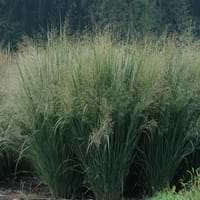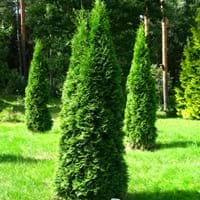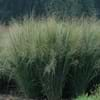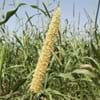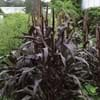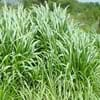Life Span
Perennial
Perennial
Type
Grass
Needled or Scaled Evergreen
Origin
North America, Canada, Mexico
Northeastern United States, Mid-Atlantic United States, Southeastern United States, North-Central United States, Central United States, Canada
Types
Panicum abscissum, Panicum acostia, Panicum amarum
Not Available
Number of Varieties
Not Available
Habitat
Prairies
Forests, gardens, Roadsides
USDA Hardiness Zone
4-9
3-7
Sunset Zone
1a, 1b, 2a, 2b, 3a, 3b, 4, 5, 6, 7, 8, 9, 10, 11, 14, 15, 16, 17, 18, 19, 20, 21, 22, 23
A2, A3, 1a, 1b, 2a, 2b, 3a, 3b, 4, 5, 6, 7, 8, 9, 15, 16, 17, 21, 22, 23, 24
Habit
Upright/Erect
Pyramidal
Flower Color
Green
Non Flowering Plant
Flower Color Modifier
Bicolor
Bicolor
Fruit Color
Not Available
Green, Light Green
Leaf Color in Spring
Green, Light Green, Blue Green, Gray Green
Dark Green
Leaf Color in Summer
Light Green
Dark Green
Leaf Color in Fall
Red, Green, Orange, Blue Green, Gray Green, Bronze
Olive, Dark Green
Leaf Color in Winter
Tan, Sandy Brown
Dark Green, Brown, Black
Leaf Shape
Grass like
Compound
Plant Season
Spring, Summer, Fall, Winter
Spring, Summer, Fall, Winter
Sunlight
Full Sun, Partial Sun
Full Sun, Partial Sun
Type of Soil
Clay, Loam, Sand
Clay, Loam, Sand
The pH of Soil
Acidic, Neutral, Alkaline
Acidic, Neutral
Soil Drainage
Average
Average
Bloom Time
Early Summer, Summer, Late Summer
Spring
Tolerances
Pollution, Soil Compaction
Drought
Where to Plant?
Ground
Ground
How to Plant?
Divison, Root Division
Seedlings, Vegetative Reproduction
Plant Maintenance
Medium
Medium
Watering Requirements
Average Water Needs, Do Not over Water, Requires regular watering
Average Water Needs
In Summer
Lots of watering
Lots of watering
In Spring
Moderate
Moderate
In Winter
Average Water
Average Water
Soil pH
Acidic, Neutral, Alkaline
Acidic, Neutral
Soil Type
Clay, Loam, Sand
Clay, Loam, Sand
Soil Drainage Capacity
Average
Average
Sun Exposure
Full Sun, Partial Sun
Full Sun, Partial Sun
Pruning
Prune in spring, Remove dead or diseased plant parts, Remove deadheads
Prune if you want to improve plant shape, Remove deadheads, Shape and thin as needed
Fertilizers
Nitrogen
All-Purpose Liquid Fertilizer
Pests and Diseases
Red blotch
Pests and diseases free
Plant Tolerance
Pollution, Soil Compaction
Drought
Flower Petal Number
Single
Single
Fragrant Bark/Stem
No
Yes
Foliage Texture
Fine
Fine
Foliage Sheen
Matte
Matte
Attracts
Birds, Wildlife
Bees, Birds
Allergy
Not Available
no allergic reactions
Aesthetic Uses
Showy Purposes
Beautification, Landscape Designing
Beauty Benefits
Not Available
Not Available
Edible Uses
Insignificant
No
Environmental Uses
Air purification, Provides ground cover, soil erosion prevension on hill slopes
Air purification
Medicinal Uses
Not Available
No Medicinal Use
Part of Plant Used
Leaves
Wood
Other Uses
Cattle Fodder, Used as Biofuel
Showy Purposes
Used As Indoor Plant
No
No
Used As Outdoor Plant
Yes
Yes
Garden Design
Container, Feature Plant, Foundation, Mixed Border
Hedges, Screening, Wind Break
Botanical Name
PANICUM virgatum
THUJA occidentalis 'Techny'
Common Name
Switchgrass
White Cedar
In Hindi
Switchgrass
Techny Arborvitae
In German
Switchgrass
Techny Lebensbaum
In French
switchgrass
Techny Arborvitae
In Spanish
switchgrass
Techny Arborvitae
In Greek
switchgrass
Techny Arborvitae
In Portuguese
switchgrass
Techny Arborvitae
In Polish
switchgrass
Techny Tuja
In Latin
switchgrass
Techny Arborvitae
Phylum
Magnoliophyta
Pinophyta
Class
Liliopsida
Pinopsida
Family
Poaceae
Cupressaceae
Clade
Angiosperms, Commelinids, Monocots
Dicotyledonous
Tribe
Paniceae
Not Available
Subfamily
Panicoideae
Not Available
Number of Species
Not Available
Season and Care of Switchgrass and Techny Arborvitae
Season and care of Switchgrass and Techny Arborvitae is important to know. While considering everything about Switchgrass and Techny Arborvitae Care, growing season is an essential factor. Switchgrass season is Spring, Summer, Fall and Winter and Techny Arborvitae season is Spring, Summer, Fall and Winter. The type of soil for Switchgrass is Clay, Loam, Sand and for Techny Arborvitae is Clay, Loam, Sand while the PH of soil for Switchgrass is Acidic, Neutral, Alkaline and for Techny Arborvitae is Acidic, Neutral.
Switchgrass and Techny Arborvitae Physical Information
Switchgrass and Techny Arborvitae physical information is very important for comparison. Switchgrass height is 150.00 cm and width 90.00 cm whereas Techny Arborvitae height is 300.00 cm and width 150.00 cm. The color specification of Switchgrass and Techny Arborvitae are as follows:
Switchgrass flower color: Green
Switchgrass leaf color: Green, Light Green, Blue Green and Gray Green
Techny Arborvitae flower color: Non Flowering Plant
- Techny Arborvitae leaf color: Dark Green
Care of Switchgrass and Techny Arborvitae
Care of Switchgrass and Techny Arborvitae include pruning, fertilizers, watering etc. Switchgrass pruning is done Prune in spring, Remove dead or diseased plant parts and Remove deadheads and Techny Arborvitae pruning is done Prune if you want to improve plant shape, Remove deadheads and Shape and thin as needed. In summer Switchgrass needs Lots of watering and in winter, it needs Average Water. Whereas, in summer Techny Arborvitae needs Lots of watering and in winter, it needs Average Water.
